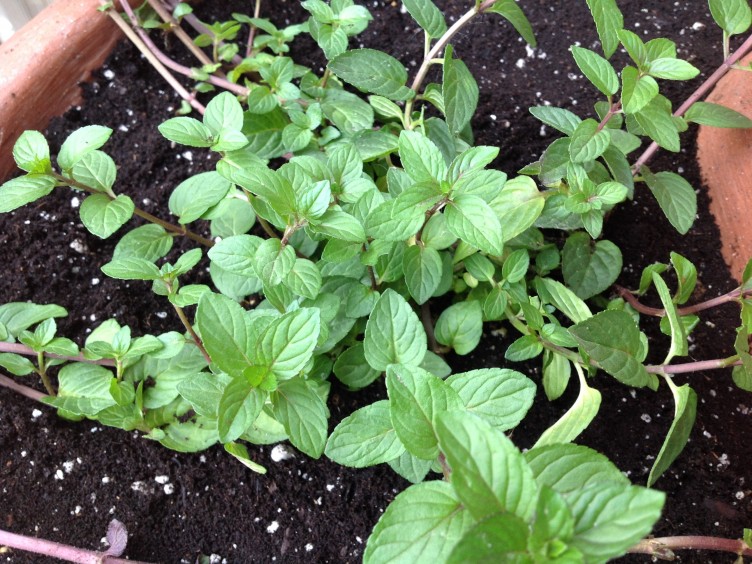Lately, friends have been asking about choosing herbs to grow at home. Here are 5 herbs that are easy to grow, both in the ground or in a pot.
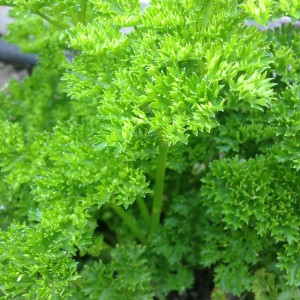 Parsley
Parsley
Parsley is a great way to freshen up pretty much any dish. It is also tasty in its own right, and my version of tabbouleh is basically just a parsley salad. It can be grown from seed very easily. I usually place several seeds on the surface of the soil, water it, then wait. After a couple of weeks, I select the biggest one or two seedlings to replant. Like other plants with tap roots (big, deep roots like carrots), parsley doesn’t like being transplanted. It is best to only do this once, and when the plant is fairly young. Parsley can grow in most light conditions, and is tolerant of light frosts. The simplest way to dry parsley is to place the washed leaves in a paper bag, then put the bag in the crisper in the fridge. After a month or so, the leaves will have dried, but the colour will be intact.
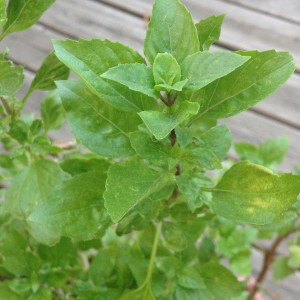 Basil
Basil
Summer dishes and basil go hand in hand. Basil tastes great in quinoa salad, on roasted potatoes, and with freshly grown tomatoes. The most common type of basil can be grown from seed, but we prefer to grow columnar basil, which cannot, and needs to be purchased. Most sources say that basil needs full sun, but I find that the leaves tend to burn in too much light, and I prefer part shade. Basil is sensitive to frost, so before the weather gets too cool in the fall, cut it down and make pesto! I have not found a great way to dry basil, without the leaves turning brown and unappealing. Suggestions, anyone?
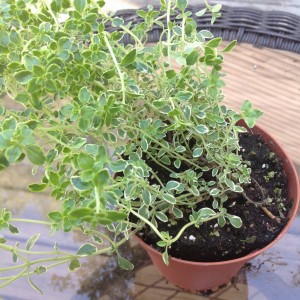 Thyme
Thyme
Don’t let the small size of its leaves fool you, thyme packs a punch. That being said, the flavour doesn’t overwhelm, but compliments other tastes, and is often used in combination with other herbs. It is a key ingredient in French, Italian and Mediterranean recipes. Thyme is a versatile herb that can be used in many different dishes, including a dry rub for chicken. Although it is a perennial, it can be killed by a colder than usual winter here in Toronto (zone 6), so I sometimes bring the plant inside for the winter. You can dry the leaves by tying bundles of stems upside down in a dry area for about a month.
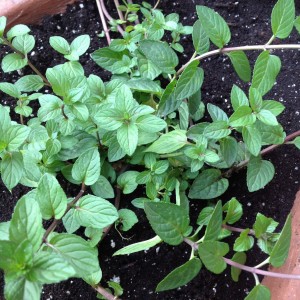 Mint
Mint
Mojitos! Mint juleps! Creme de menthe! More mojitos (it’s worth repeating)! Summer heat + cool mint drinks = heaven!!! You can have your own piece of heaven, because fortunately mint is very easy to grow. In fact, a bit too easy – the roots tend to be invasive, and It is probably best to plant mint in a container so that it doesn’t take over your garden. Mint can be dried by hanging upside down.
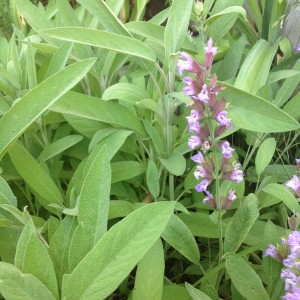 Sage
Sage
There are many varieties of sage, and all are wonderful. You can find ordinary sage, with greyish-green leaves and lovely purple flowers. But you can also find ones with multicoloured leaves, ones with red flowers, and even ones with purple leaves. Regular sage is very hardy, and will turn into a fairly large bush if left to its own devices. I usually cut mine back every year to keep it under control. The fancier varieties are more sensitive to cold weather. Sage pairs well with chicken, or you can fry it in butter to make a sauce for pasta. I just love the smell of sage, and will often brush against it to release the scent. Sage leaves dry well.

